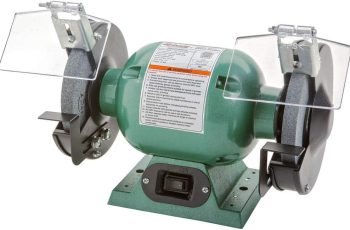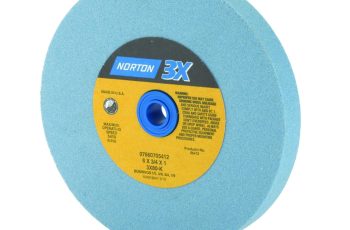In the world of power tools, there is an ongoing debate between two heavyweights: bench grinders and belt sanders. Both tools serve distinct purposes when it comes to shaping and sharpening materials, but which one is the ultimate champion? While bench grinders are renowned for their speed and precision, belt sanders offer versatility and control. In this article, we will explore the key differences between these powerhouses and help you decide which tool is the perfect fit for your workshop.
Overview
In the world of power tools, two machines stand out for their effectiveness and versatility: bench grinders and belt sanders. These tools are essential for various projects and tasks, but they have distinct differences in functionality, design and build, size and power, speed and efficiency, safety features, applications, pros and cons, as well as maintenance and care. Understanding these differences will help you determine which tool best suits your needs and preferences.
Purpose
The purpose of this article is to compare bench grinders and belt sanders, highlighting their unique features and advantages. By providing comprehensive insights into each tool’s functionality, design, size and power, speed and efficiency, safety features, applications, as well as pros and cons, you’ll be equipped to make an informed decision regarding which tool best suits your specific requirements. Whether you are a DIY enthusiast or a professional woodworker, this article aims to guide you in choosing the right tool for your projects.

Differences in Functionality
Uses of Bench Grinders
Bench grinders are powerful and versatile tools commonly used for sharpening blades, shaping metal, and removing rust or paint from various surfaces. With their grinding wheels, they are perfect for sharpening tools such as chisels, knives, and even lawnmower blades. Bench grinders can also be equipped with wire brush wheels, allowing for efficient cleaning of metal surfaces. These tools are a staple in workshops, garages, and woodshops, making them essential for tasks that require precision and efficient material removal.
Uses of Belt Sanders
On the other hand, belt sanders are primarily designed for smoothing and shaping wood surfaces, making them ideal for woodworking projects. Belt sanders use a continuous loop of abrasive sandpaper to remove material from the workpiece, providing a smooth and even finish. They are frequently used in tasks such as sanding doors, cabinets, tabletops, and floors. Belt sanders are also effective for removing sharp edges and leveling uneven surfaces, making them invaluable for both professional carpenters and DIY enthusiasts.
Design and Build
Components of Bench Grinders
Bench grinders typically consist of a motor, grinding wheels, adjustable tool rests, and a protective spark guard. The motor powers the grinding wheels, which come in different sizes and grits depending on the task at hand. The adjustable tool rests allow for precise positioning of the workpiece, ensuring accurate and controlled grinding. The protective spark guard prevents sparks and debris from coming into contact with the user, enhancing safety during operation.
Components of Belt Sanders
In contrast, belt sanders consist of a motor, sanding belt, tensioning mechanism, and adjustable support plate. The motor drives the continuous loop of sanding belt, providing consistent and efficient material removal. The tensioning mechanism allows for easy replacement and adjustment of the sanding belt, ensuring optimal performance. The adjustable support plate provides stability and control, allowing the user to achieve the desired finish and smoothness.

Size and Power
Size of Bench Grinders
Bench grinders come in various sizes, typically ranging from 6 to 8 inches in wheel diameter. The size of the bench grinder you choose depends on the nature of your projects and the available workspace. Smaller bench grinders are more portable and suitable for tasks that require precision and detail work. Larger bench grinders, on the other hand, are often preferred for heavy-duty applications and projects that involve larger workpieces.
Size of Belt Sanders
Similarly, belt sanders are available in different sizes, primarily determined by the width of the sanding belt. Common sizes include 1 inch, 3 inches, and 4 inches. The width of the belt determines the surface area covered during sanding, affecting the efficiency and speed of material removal. Smaller belt sanders are ideal for fine woodworking and intricate projects, while larger belt sanders are better suited for larger-scale tasks.
Power of Bench Grinders
When it comes to power, bench grinders typically range from 1/3 to 1 horsepower. Higher horsepower models provide more torque and can handle tougher materials and larger workpieces. It is important to consider the power of the bench grinder in relation to the tasks at hand. If you primarily work with soft metals and smaller objects, a lower horsepower bench grinder may suffice. However, for heavy-duty applications, such as grinding steel or large-scale projects, a higher horsepower bench grinder is recommended.
Power of Belt Sanders
Similarly, the power of belt sanders is essential for efficient material removal and achieving the desired finish. Belt sanders typically range from 6 to 12 amps of motor power. Lower power models are suitable for light-duty sanding and smaller workpieces, while higher power models are better equipped for extensive sanding tasks and larger surfaces. Consider the nature of your projects and the expected workload when selecting the appropriate power rating for your belt sander.
Speed and Efficiency
Speed of Bench Grinders
Bench grinders have varying speed options, typically ranging from 1,725 to 3,450 revolutions per minute (RPM). The speed at which the grinding wheel rotates affects the efficiency and control of grinding operations. Lower speed bench grinders offer more control and precision, making them ideal for sharpening and delicate applications. Higher speed bench grinders are better suited for material removal, especially when working with tougher materials and larger workpieces.
Speed of Belt Sanders
In contrast to bench grinders, belt sanders generally operate at higher speeds, typically ranging from 3,000 to 6,000 surface feet per minute (SFPM). The high speed of the sanding belt enables quick and efficient material removal, making belt sanders ideal for larger sanding projects. However, it is important to note that higher speeds may require a greater level of control and may not be suitable for certain delicate or intricate sanding applications.
Efficiency of Bench Grinders
Bench grinders are highly efficient when it comes to metal grinding and sharpening tasks. With their grinding wheels designed specifically for material removal, bench grinders can quickly shape and sharpen tools, saving time and effort. The adjustable tool rests and precise control over grinding speed contribute to the overall efficiency of bench grinders, allowing for accurate and consistent results.
Efficiency of Belt Sanders
Belt sanders excel in efficiency when it comes to wood sanding and shaping. The continuous loop of abrasive sandpaper ensures a large surface area is covered during sanding, reducing the time and effort required to achieve a smooth finish. The adjustable support plate further enhances efficiency, as it allows for consistent sanding across the entire workpiece. For professional carpenters and woodworkers dealing with extensive sanding tasks, belt sanders provide a significant boost to overall efficiency.

Safety Features
Safety Features of Bench Grinders
Bench grinders are equipped with several safety features to minimize the risk of accidents and injuries. These features typically include a robust spark guard to protect the user from sparks and debris, as well as an adjustable eye shield for enhanced visibility and eye protection. Bench grinders also often come with a safety paddle switch, which requires constant pressure from the user to maintain operation, preventing accidental activation and ensuring the tool is only used when the user is ready.
Safety Features of Belt Sanders
Similarly, belt sanders incorporate safety features to prevent potential hazards during operation. Most belt sanders come with a dust collection mechanism or port, which helps maintain a clean and safe work environment by capturing dust and debris. Some models also feature an automatic shutdown system, triggered by excessive vibrations, to prevent accidents caused by excessive material removal or instability during sanding. Additionally, many belt sanders include a trigger lock-off mechanism to prevent unintentional starting of the tool.
Applications
Applications of Bench Grinders
Bench grinders find applications in various industries and projects. They are commonly used in metalworking for sharpening tools and removing rust or paint from metal surfaces. They are also frequently employed in woodworking for shaping and profiling wood pieces. Additionally, bench grinders can be utilized in the automotive industry for tasks like repairing damaged parts and restoring metal components. Furthermore, bench grinders are invaluable in tool maintenance, ensuring that your tools stay sharp and in optimal condition.
Applications of Belt Sanders
Belt sanders are primarily employed in woodworking tasks that require efficient material removal and achieving a smooth finish. They are commonly used for sanding doors, cabinets, tabletops, and floors, as well as shaping and leveling uneven surfaces. Belt sanders are also popular in fine woodworking, allowing for intricate sanding and detailing work. Whether you are sanding a large tabletop or shaping delicate wooden crafts, belt sanders provide versatile and effective solutions.
Pros and Cons
Pros of Bench Grinders
- Versatility: Bench grinders are versatile tools suitable for various applications, both in metalworking and woodworking.
- Precision: With adjustable tool rests and precise control, bench grinders allow for accurate and controlled grinding.
- Tool Sharpening: Bench grinders are excellent for sharpening tools, ensuring optimal performance and longevity.
- Robust Construction: Bench grinders are built to withstand heavy-duty applications and prolonged use.
- Wide Range of Grits: Grinding wheels are available in different grits, allowing for various levels of material removal and finish.
Cons of Bench Grinders
- Limited to Grinding: Bench grinders are primarily designed for grinding tasks and may not be suitable for other applications.
- Potential for Accidents: Due to their high rotational speed and powerful grinding wheels, bench grinders can be dangerous if not used properly or without proper safety precautions.
Pros of Belt Sanders
- Efficient Material Removal: Belt sanders excel in quickly and efficiently removing material, saving time and effort.
- Smooth Finish: The continuous loop of sanding belt ensures a smooth and even finish across the entire workpiece.
- Versatile: Belt sanders are suitable for various woodworking projects, from large-scale sanding to intricate detailing work.
- Easy Belt Replacement: The tensioning mechanism allows for quick and hassle-free replacement of the sanding belt.
- Dust Collection: Many belt sanders come with built-in dust collection mechanisms, improving cleanliness and safety.
Cons of Belt Sanders
- Limited to Woodworking: Belt sanders are primarily designed for woodworking projects and may not be suitable for other materials.
- High Speeds: The high speed of belt sanders may require extra caution and control, especially for delicate or intricate tasks.
Maintenance and Care
Maintenance of Bench Grinders
Proper maintenance of bench grinders is crucial for optimal performance and longevity. Regularly inspect the grinding wheels for cracks or damage, and replace them if necessary. Keep the grinding wheels clean and free from debris by periodically running a dressing stone across them. Lubricate any moving parts as recommended by the manufacturer, ensuring smooth operation. Additionally, check and tighten any loose screws or bolts to maintain stability and prevent accidents during use.
Maintenance of Belt Sanders
To keep your belt sander in top condition, follow these maintenance tips. Regularly inspect the sanding belt for wear and tear, and replace it when necessary. Clean the sander’s dust collection mechanism or port to prevent clogs and ensure efficient dust removal. Keep the support plate clean and free from debris to maintain consistent sanding results. Lubricate any moving parts as recommended by the manufacturer. Lastly, check the tensioning mechanism and adjust it as needed to ensure proper belt alignment and tension.
Care Tips for Bench Grinders
To extend the lifespan of your bench grinder, here are some care tips. Avoid applying excessive pressure during grinding, as this can cause unnecessary strain on the motor and grinding wheels. Use the appropriate grit and wheel for the task at hand to prevent damage and ensure optimal performance. Regularly clean the spark guard and eye shield to ensure clear visibility. Store your bench grinder in a clean and dry environment to protect it from dust and moisture when not in use.
Care Tips for Belt Sanders
To keep your belt sander in excellent condition, consider these care tips. Avoid excessive pressure when sanding, as it can lead to premature wear of the sanding belt. Always use the appropriate grit for the desired finish and material. Take breaks during prolonged sanding to prevent overheating of the motor and sanding belt. Store your belt sander in a clean and dry place, away from excess dust and moisture. Additionally, periodically check and tighten any loose screws or bolts to maintain stability and prevent accidents.
In conclusion, bench grinders and belt sanders are powerful tools with unique features and advantages. Both tools have their specific functionality, design, size, power, speed, efficiency, safety features, applications, pros and cons, as well as maintenance and care requirements. By understanding these differences, you can make an informed decision when choosing between a bench grinder and a belt sander, ensuring that you have the right tool for your projects. Whether you need a versatile grinding tool or a speedy sanding solution, both bench grinders and belt sanders are valuable additions to any workshop or tool collection.



